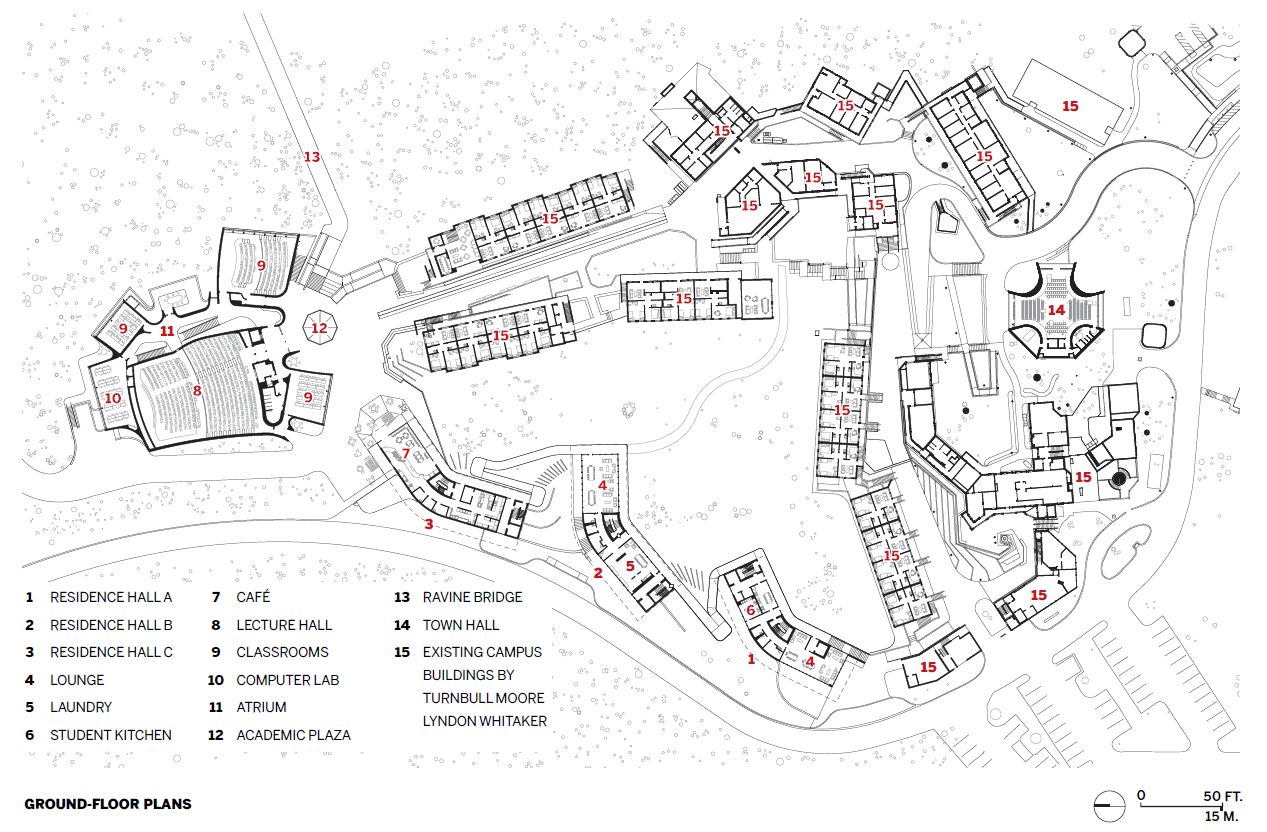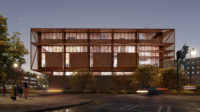If they stood in isolation on a horizontal city block, the three new residential halls at the University of California, Santa Cruz, might seem imposing—five-story curved bars clad in dark wood, with flat facades and orderly stacks of relatively small windows.
Place them on a ridge above a ravine, amid tall stands of redwood trees, and the stocky trio takes on a very different aura: an inventive pairing of built forms and nature where, if anything, the existing beauty is energized by the addition of urban-scaled academic life.
The three buildings are part of a remake of Kresge College, the theatrical Postmodern take on an Italian hill town conceived by Charles Moore and William Turnbull in the late 1960s. This small residential college within the large public university is located on the northern edge of Monterey Bay, nestled in the woodlands above a fabled beach town. The theme of Kresge when it opened in 1973 was participatory democracy, often pushed to such extremes as a 1990 effort to secede from the rest of the university over pressures to replace written evaluations with regular letter grades (grades, alas, were introduced campus-wide in 2001).
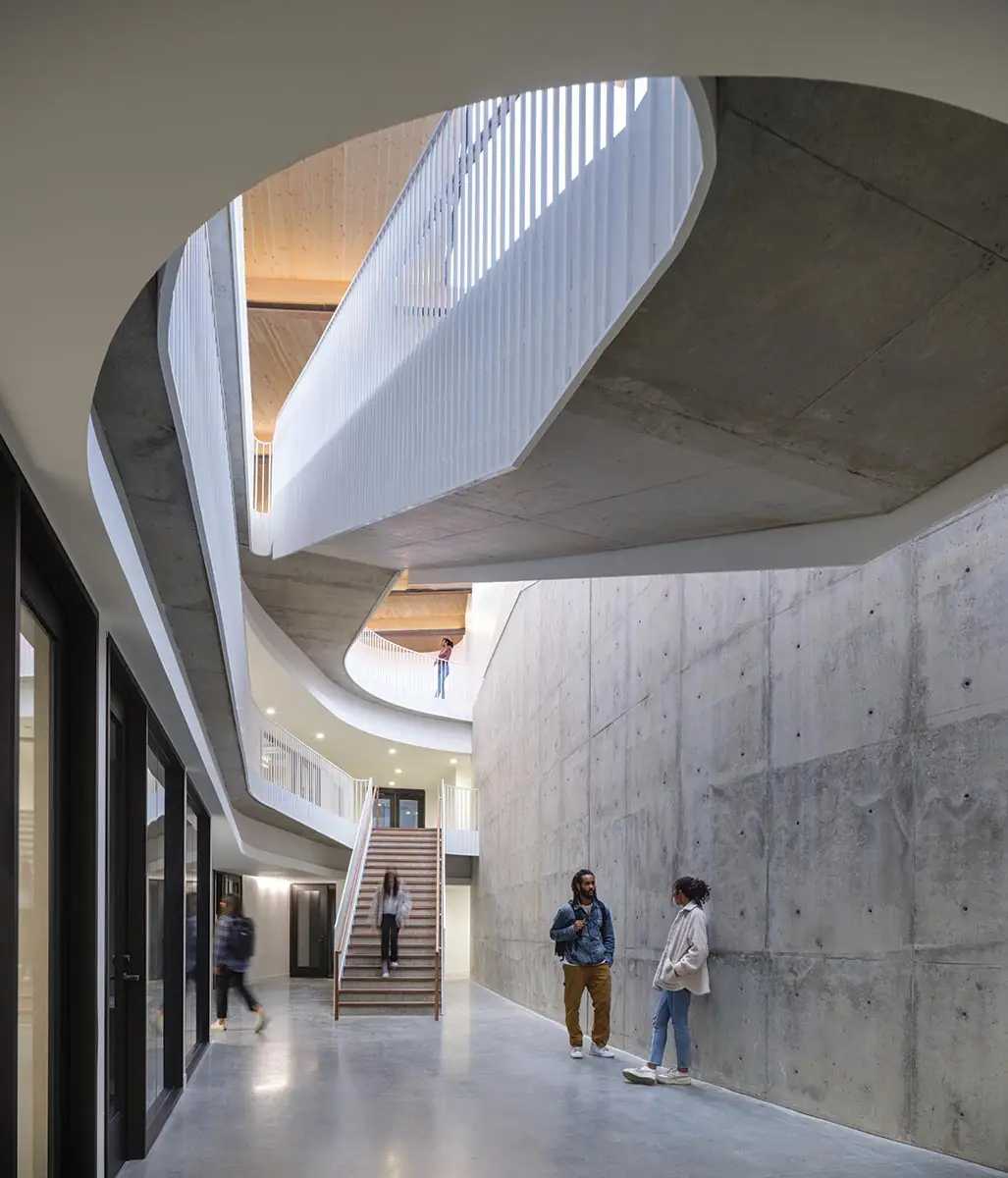
1
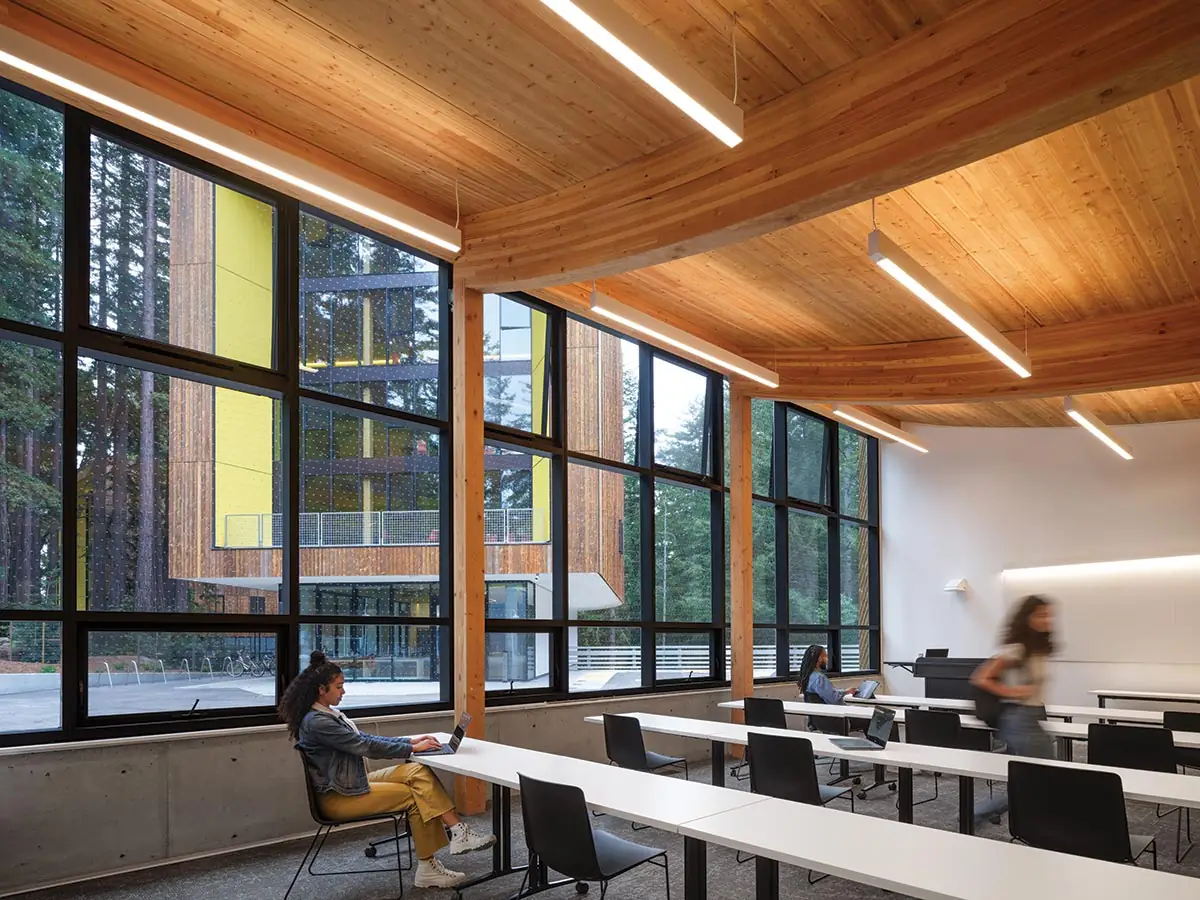
2
The academic center features a central atrium (1) and a classroom (2) looking out to one of three new residence halls (3). Photos © Jason O’Rear Photography, click to enlarge.
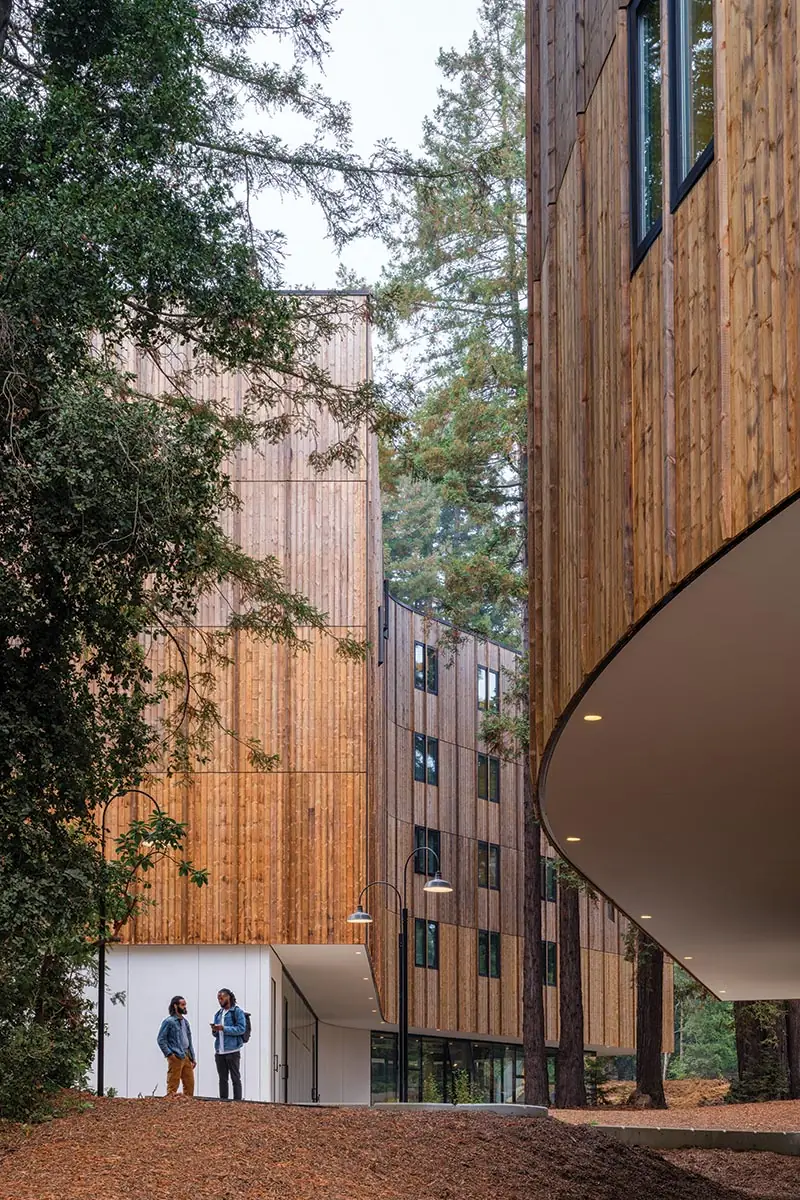
3
Fittingly, the remake is led by an equally imaginative 21st-century practitioner. Jeanne Gang and her Chicago-based firm Studio Gang designed the residential trio, plus a large academic building that opened to students in September. The project’s completion comes nearly six years after the firm began work on their design, restoring what it could and rebuilding as required, while adding desperately needed undergraduate housing as well as classrooms and a lecture hall that could serve the entire university. Further, large parts of Moore’s almost willfully idiosyncratic enclave were inaccessible to anyone with limited mobility.
“We tried to really think about what we could bring to the campus now,” Gang says. At the same time, “we wanted to hang onto the original spirit of the Moore-Turnbull design.”
That spirit—playful but also attuned to place—infuses Gang’s large academic center at the north end of the eight-acre campus. The building replaces Kresge’s “town hall” and bears little visual resemblance to the angled Postmodernism of Moore’s linear village, other than the use of white plaster on the outer walls; instead, the billowing form has an almost unreal naturalism as it spills down two levels toward the ravine.
According to Gang, the inspiration was the mushrooms that grow on the trunks of redwood trees in the dense, moist forests that surround the campus, spreading wide in layer after sinuous layer.
“I love how this building turned out,” she confesses. “We worked really hard on the curves, to make it more organic. When we first put it on the site, it felt huge.”
The academic center’s height tops off at only 31 feet, equal to its predecessor, yet it contains a 600-seat lecture hall that ranks as the largest at UC Santa Cruz. The lower levels of the building offer fairly conventional classrooms and staff spaces, albeit with large windows that showcase the redwoods edging the ravine. But the gentle descent of the auditorium, and the clerestory-lit passageways along it, pull the earthy flow of the exterior into the building itself. So does the overlapped drama of stairways and corridors that swell to allow seating nooks, the occasional table, or spots to lean against a railing and trade gossip with a friend.
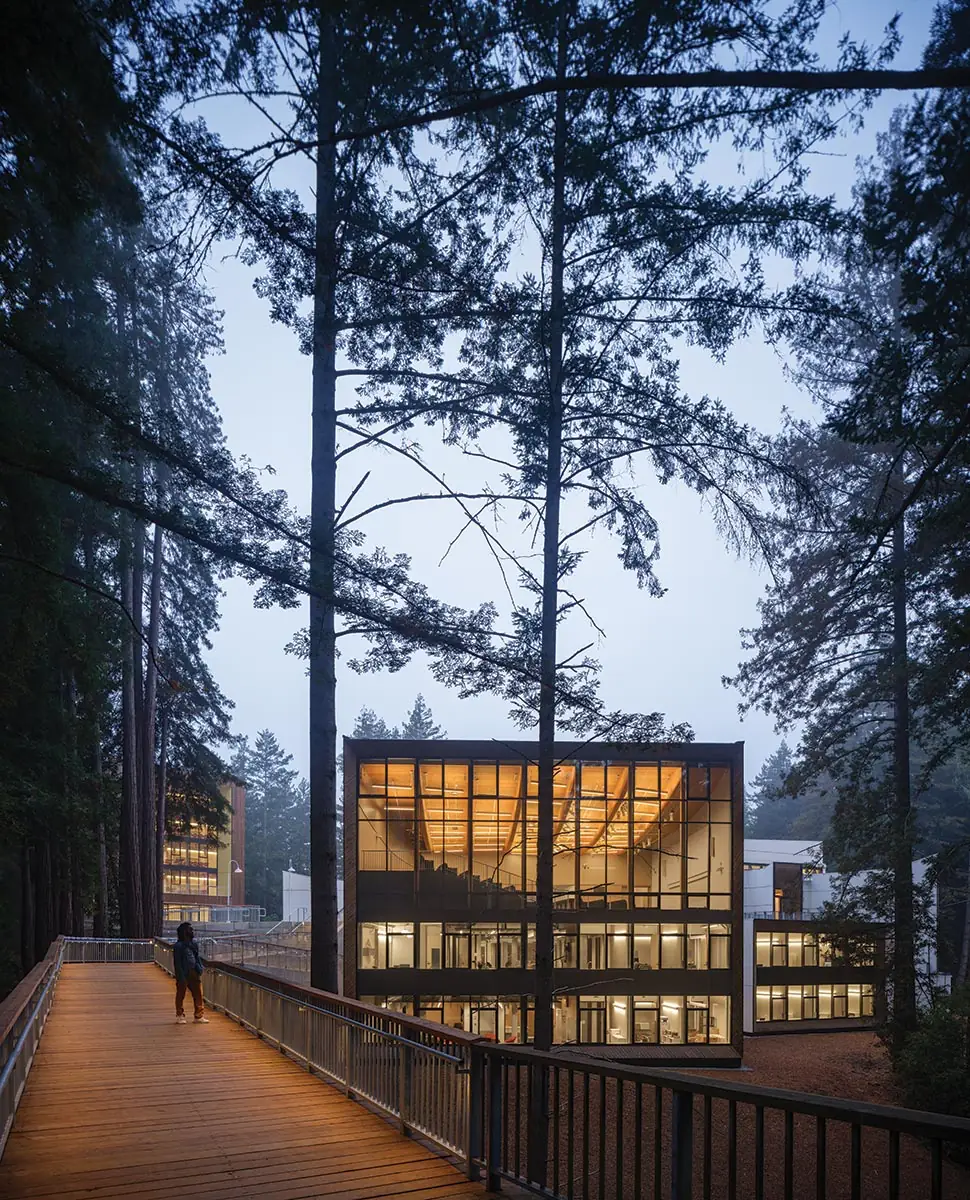
4
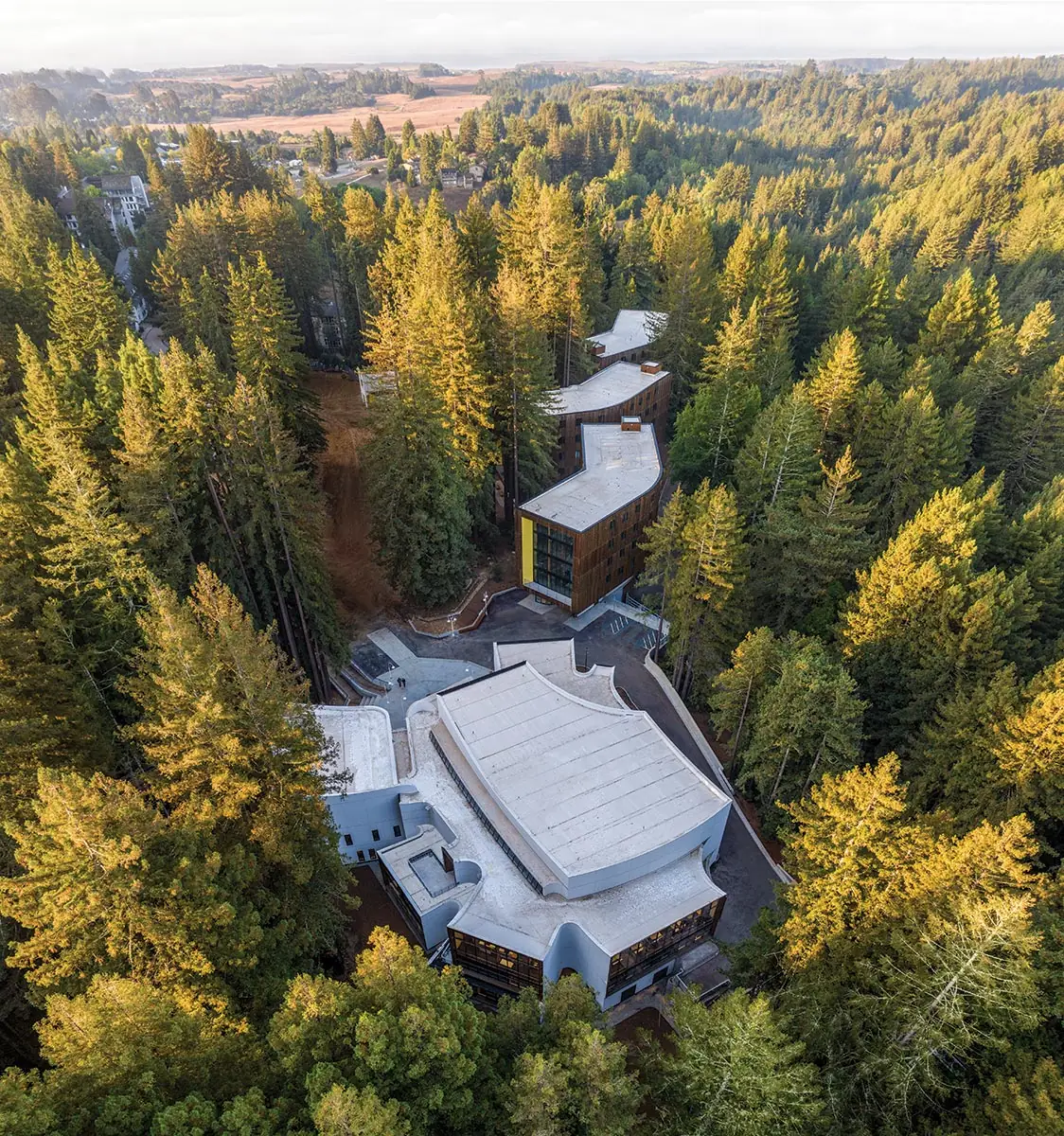
5
An elevated ravine walk (4) carries foot traffic through Kresge College’s heavily wooded eight-acre campus (5). Photos © Jason O’Rear Photography
There’s an entirely different tone to the new residential halls that begin southwest of the academic building and together contain 400 beds, in addition to the 365 in the original housing structures that are being rebuilt as part of the master plan’s second phase.
These new buildings run along a section of Kresge’s ridge that hadn’t yet been developed, which meant cutting down roughly 40 trees of varying size. Distinctive clusters were retained where possible, which meant bending each rectangular block into forms that Gang and her colleagues liken to elbow macaroni. The upper floors cantilever out from the base, creating shielded pathways that also lessen the structures’ presence on the ground. Similarly, the stub ends of each hall are clad in glass for common areas at the ground level as a gesture toward porosity and community; Halloween morning, students could be seen carving pumpkins in one ground-floor lounge.
The new residential halls show hints of the strain involved in working to maximize the number of student beds while confining each structure to as small a footprint as possible: the hallways are narrow, with exposed overhead ductwork painted vibrant orange to tryto enliven them. More successful is the exposed cross-laminated timber in the lounges and dorm rooms, a warm touch that humanizes even the snuggest spaces. The slats of pine that, above the base, clad the exteriors play a different role: they give the bent forms a dark, vivid hue that fits well within the redwoods rising on all sides.
“From the beginning, we sought to connect with the environment rather than wall it off,” says Steve Wiesenthal, who leads Studio Gang’s San Francisco office and served as principal in charge for the project. “The aim is buildings that are of the forest rather than the street.”
The full measure of Kresge’s renewal can’t be taken until completion of the final phase of Gang’s master plan, a design-build project that includes Bay Area firm EHDD. It will include 12 renovated or reconstructed buildings and bring the total number of beds at the college to 990. So far, though, the update feels right—a lesson for students that architecture can set a forward-thinking tone, no matter how different the times today might be.
Click plans to enlarge
